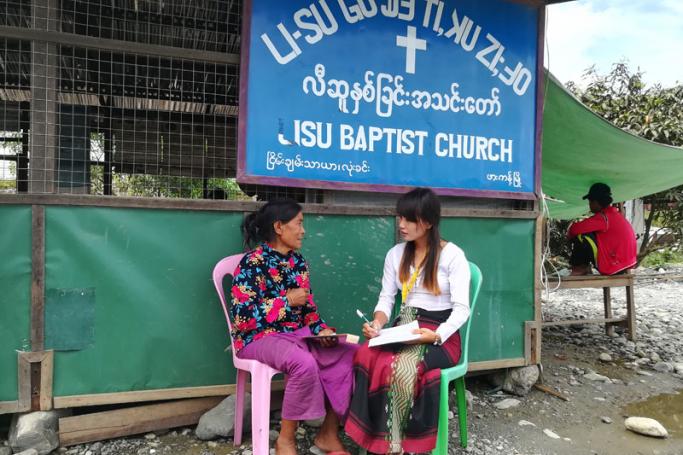The United Nations World Food Programme (WFP) has had ongoing operations in Kachin State since 2008, when a field office was opened in the Kachin capital, Myitkyina, to provide food assistance to conflict-affected communities, according to a WFP statement. WFP’s long-term relief and recovery operations aim to support people in rebuilding their livelihoods and improving their food security and nutritional status.
In 2011, WFP, in collaboration with two local and one international NGO, began providing life-saving food assistance to internally displaced people (IDPs) in government-controlled areas (GCA) and non-government-controlled areas (NGCA) of Kachin. However, the government has denied the United Nations, including WFP, access to NGCAs since June 2016 despite the organization’s continued appeal to reverse the ban.
In January 2016, WFP gradually transitioned from in-kind food assistance to cash-based transfers for IDPs who have reliable access to local markets. Cash assistance is meant to cover basic food needs. The purpose of the shift from in-kind food assistance to cash-based transfers is to encourage beneficiaries’ self-reliance and the dignity of choice when it comes to their food needs.
WFP cash-based assistance relies on figures collected from a monthly beneficiary survey completed by WFP; its cooperating partners; Camp Management Committees (CMC), Food Management Committees (FMC) and IDPs. The monthly survey is completed in all 99 camps in GCA where WFP works. The level of assistance is determined by the vulnerability of IDP households. Currently, the most vulnerable households receive a 100 percent cash equivalent of a WFP food basket (which typically includes rice, pulses, oil and salt) while less vulnerable households receive a 70 percent cash equivalent. The actual cash amount received by each household reflects the prices of individual markets in the area and is reviewed periodically.
WFP and its cooperating partners closely monitor local markets for the amount of cash provided for assistance. IDPs can report any irregularities or concerns through a complaint and feedback mechanism set up in all IDP camps where WFP is active. WFP systematically verifies and acts upon these complaints.
In addition to life-saving food assistance, WFP initiated a school feeding programme in the 2015-2016 academic year reaching 3,800 students in 45 schools. By the 2017-2018 academic year, it reached as many as 39,600 students in 404 primary schools in Myitkyina, Momauk, Mansi, Bhamo, Waing Maw, Machanbaw, Tanai and Chipwi townships. WFP plans to continue the school feeding programme in the 2018-2019 academic year.
Through the end of the year, WFP, in partnership with the Asian Harm Reduction Network, is also assisting 200 people living with HIV (PLHIV) and/or tuberculosis (TB). They will receive food assistance consisting of rice, pulses, oil, salt and fortified blended food at the start of an anti-retroviral treatment (ART) or if their body mass index remains below 18.5.TB patients are supported for the whole duration of Directly Observed Therapy (DOTS) of tuberculosis.
WFP works together with local government partners like the Kachin State Government, the Department of Rural Development and the Department of Disaster Management; the Protection Working Group led by UNHCR; Gender Based Violence sector clusters led by UNFPA; and local partners, such as Karuna Mission Social Solidarity (KMSS), Metta and Kachin Baptist Convention (KBC), whenever possible. WFP also works with other United Nations agencies including UNOCHA, UNDP, UNICEF, UNDSS, UNWOMEN, and IOM; INGOs like Solidarites International (SI); and local NGOs, including KMSS-Myitkyina, KMSS-Bhamo, World Vision and AHRN.
Courtesy of the World Food Programme
You are viewing the old site.
Please update your bookmark to https://eng.mizzima.com.
Mizzima Weekly Magazine Issue...
14 December 2023
Spring Revolution Daily News f...
13 December 2023
New UK Burma sanctions welcome...
13 December 2023
Spring Revolution Daily News f...
12 December 2023
Spring Revolution Daily News f...
11 December 2023
Spring Revolution Daily News f...
08 December 2023
Spring Revolution Daily News f...
07 December 2023
Diaspora journalists increasin...
07 December 2023
Yoma Bank and ICBC to facilitate cross-border business












